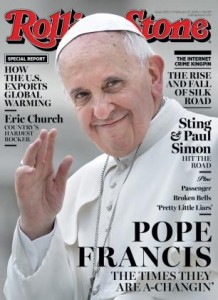 One axiom in biblical studies that needs to go away forever is the so-called “Messianic secret”. I can’t tell you how many times I’ve heard this references in articles, commentaries, and sermons. What is the “Messianic secret”, you ask? It’s the idea floated by some Gospel scholars (especially of Mark and the other Synoptics) that Jesus was trying to keep his identity as Messiah a secret. This is allegedly why he doesn’t want people who he has healed to spread the news about him, and why he doesn’t allow demons to tell people who he really is, either (We just talked about that last item yesterday).
One axiom in biblical studies that needs to go away forever is the so-called “Messianic secret”. I can’t tell you how many times I’ve heard this references in articles, commentaries, and sermons. What is the “Messianic secret”, you ask? It’s the idea floated by some Gospel scholars (especially of Mark and the other Synoptics) that Jesus was trying to keep his identity as Messiah a secret. This is allegedly why he doesn’t want people who he has healed to spread the news about him, and why he doesn’t allow demons to tell people who he really is, either (We just talked about that last item yesterday).
This is absolute nonsense! As Dr. Craig Evans, one of the best biblical scholars on the planet, is so fond of pointing out, Jesus is the Messiah and knows it. He wants others to know it, too. Today’s Gospel reading (Mark 1:29-39) sheds some light on the issue. In the Galilee of Jesus’ day, multitudes of people were sick at any given time. There were also a ton of people who suffered from demonic possession. And here comes Jesus: a one-man, walking, free health-care clinic. Obamacare, eat your heart out! This Mark 1 passage tells us that Jesus spent practically the entire night healing people and casting out demons. The demand for is services is insatiable. This is why Jesus announces the next morning that he and the Apostles need to move on to the next towns, to preach the Good News of the Gospel. This is also, by the way, why Jesus often preached from boats, while the crowd on the shore listened. If he had allowed the crowd to get near him, there never would have been a sermon, because everyone would have been pressing in for a healing – “all who touched him were made well”.
The healings, as great as they are, can actually get in the way of what Jesus came to accomplish: to preach the message of the Kingdom. No doubt, he proclaims it in both word and deed, and the deeds are the proof of the message, if you will. In this way, exorcisms are an even more clear proof of the establishment of the Kingdom of God and the destruction of Satan’s kingdom. But we have to start with the preached Word. Even if Jesus brings someone back from the dead, like Lazarus, it’s only temporary. Lazarus would die again. He was only resuscitated, not resurrected, like Jesus would be, never to die again. Saving souls is most important. Saving bodies is only #2, although Jesus wants to save both, and will ultimately save the bodies of all of God’s friends at the general resurrection. But for now, there’s a danger, in all the excitement about his healings, that the message Jesus is bringing is getting lost in all the excitement.
First things first.
 He’s done it again.
He’s done it again.

 One axiom in biblical studies that needs to go away forever is the so-called “Messianic secret”. I can’t tell you how many times I’ve heard this references in articles, commentaries, and sermons. What is the “Messianic secret”, you ask? It’s the idea floated by some Gospel scholars (especially of Mark and the other Synoptics) that Jesus was trying to keep his identity as Messiah a secret. This is allegedly why he doesn’t want people who he has healed to spread the news about him, and why he doesn’t allow demons to tell people who he really is, either (
One axiom in biblical studies that needs to go away forever is the so-called “Messianic secret”. I can’t tell you how many times I’ve heard this references in articles, commentaries, and sermons. What is the “Messianic secret”, you ask? It’s the idea floated by some Gospel scholars (especially of Mark and the other Synoptics) that Jesus was trying to keep his identity as Messiah a secret. This is allegedly why he doesn’t want people who he has healed to spread the news about him, and why he doesn’t allow demons to tell people who he really is, either ( Why didn’t Jesus allow the demon he exorcised in today’s Gospel (Mark 1:21-28) to tell people who Jesus really was? Two reasons:
Why didn’t Jesus allow the demon he exorcised in today’s Gospel (Mark 1:21-28) to tell people who Jesus really was? Two reasons: